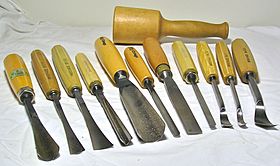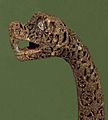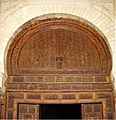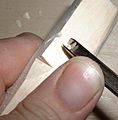Wood carving facts for kids
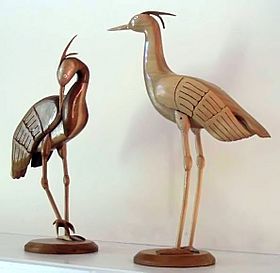
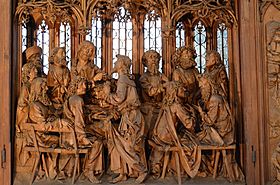
Wood carving is a form of working wood by means of a cutting tool. A chisel or knife are usual tools: the chisel can be tapped with a wooden mallet. The result is a wooden figure, or the sculptural ornamentation of a wooden object. A 'wood carving' may also refer to the finished product.
The making of sculpture in wood has a long history. Wood survives much less well than the other materials such as stone and bronze. It is vulnerable to decay, insect damage, and fire. Therefore, we do not know much about wood in the art history of older cultures. Outdoor wood sculptures do not last long in most parts of the world, so that we have little idea how the totem pole tradition developed.
Many of the most important sculptures of China and Japan are in wood, also most African sculpture and that of Oceania and other regions. Wood is light, so it is suitable for masks and other objects meant to be carried. It can take very fine detail, and is also much easier to work than stone.
Some of the finest examples of early European wood carving are from the Middle Ages in Germany, Russia, Italy and France, where the typical themes of that era were used in Christian icons. In England many complete examples remain from the 16th and 17th century, when oak was often used. In general, really fine carving is done in fruitwood (wood of a fruit tree) because that is easy to work with. The famous woodcarver Grinling Gibbons used to work with lime wood. Complex pieces are often carved in separate sections which are later stuck together.
Contents
Gallery
-
A wooden Bodhisattva from the Song Dynasty (960–1279)
-
Tilman Riemenschneider's Saint Barbara from Germany
-
The carving on the Urnes stave church is an example of the Urnes style, Norway
Related pages
Images for kids
See also
 In Spanish: Talla de madera para niños
In Spanish: Talla de madera para niños


